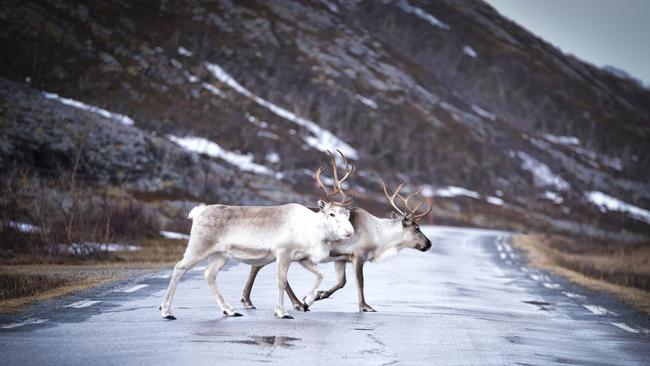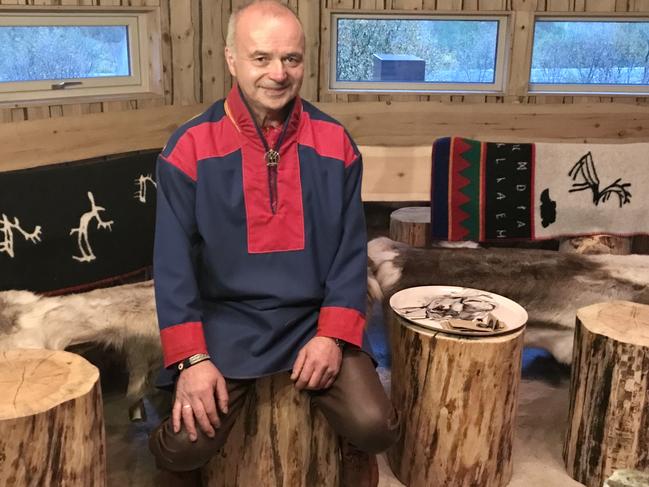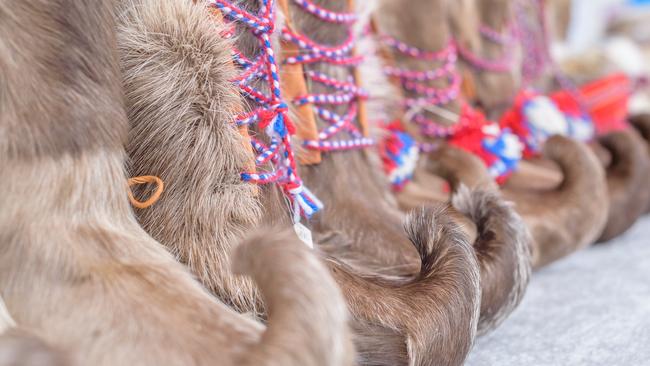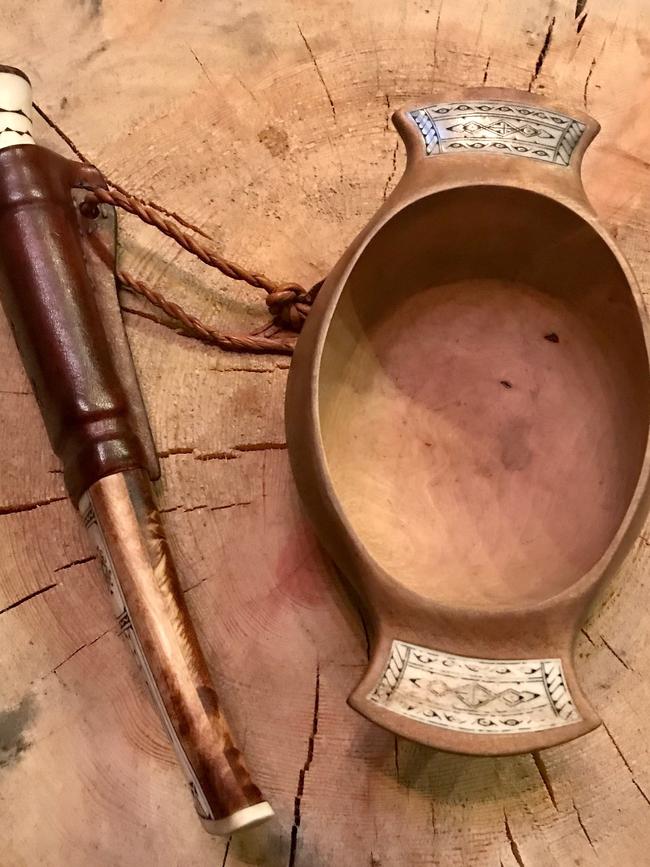Hurtigruten Norwegian Coastal Express indigenous Sami culture
The Indigenous Sami people have relied on deer for thousands of years, so it’s no surprise they have some insider knowledge.

Norwegian man Ailu Utsi lets us down gently. Apparently we’ve been wrong about Rudolph, the reindeer with the shiny, red nose who achieves hero status “one foggy Christmas Eve”. A quick Google search for depictions of the world’s most famous ungulate show Rudolph, nose aglow and antlers pointing skywards. The truth is, though, Rudolph was a girl. Male reindeer shed their antlers before winter, so “he” could only have been a “she”.
As a Sami man, Ailu is something of an expert on the animal the Indigenous people of northern Scandinavia have relied on for thousands of years as a source of food, clothing and transport. He’s hosting us in his traditional turf house, a lavvu, on an excursion from Kjollefjord, a town of 1100 people in the northern reaches of Norway. The home is a cosy, timber-lined circular structure with a teepee-style roof and a stone hearth at its centre. Colourful Sami rugs are draped over the backs of wooden benches and our backsides are cushioned by soft reindeer hides.
More than 8000 deer roam freely on this remote peninsula. They’re owned by 10 Sami families but we’ve been warned not to ask how many belong to Ailu. That would be akin to asking how much money he has in the bank. Instead, we’re able to quiz him about pretty much any other aspects of Sami culture.
Ailu has welcomed our posse of about 20 guests into his lavvu with a “yoik”, a lilting form of Sami song that is virtually devoid of words but full of feeling. Yoiks serve numerous purposes – they might be sung in celebration of nature or to enhance healing – but this particular greeting has been passed down from his great-great-grandfather, which means it’s 120 years old.

There are nine Sami languages spoken from Sweden to Russia, but it wasn’t so long ago that they were forbidden. With the arrival of Christianity in the 1700s came centuries of repression of this “pagan” people.
Ailu grew up at a time when it was still considered shameful to practise his culture, and at the age of seven, he was sent to a Norwegian school without knowing a word of the national language.
He doesn’t dwell on this traumatic period of his life but he’s a proud proponent of Sami rights, which have been enshrined in the Norwegian Constitution since 1989, following the formation of an Indigenous parliament. Sami is now Norway’s second national language; it’s taught in schools and at university and there are Sami newspapers and TV shows. Even hospitals have recognised their Sami patients may seek the care of a traditional shaman.
“I’m very proud to speak Sami language – it’s a language of the heart,” Ailu says. It’s also a language that reflects its environment, boasting about 300 words for “snow”. And there’s plenty of that during winter, isolating Kjollefjord from the mainland for weeks on end.
Most of the reindeer head south when their grazing grounds freeze, returning in mid-April to wander windswept rocky hillsides dotted with heather and bereft of trees. The Sami prepare for the herd’s absence by smoking, salting and drying the meat they eat three times a day, sometimes even for dessert.
We’re offered a slice of reindeer jerky. It’s dark and salty; a chewy treat. Ailu likes to take his immersed in a cup of coffee – “Sami fast food,” he says. I try not to think about the cute orphaned reindeer Ailu has adopted that follows him around outside like a puppy, demanding pats of its silky fur.

We’re shown some examples of exquisite handicrafts, including curly-toed shoes of reindeer skin that are lined with a special grass to insulate bare feet in temperatures of minus 40C. Who knew the Sami invented cross-country skiing? They would hook the toes of those boots under leather straps attached to long planks of wood, and off they’d go, though these days snowmobiles are the preferred mode of winter transport. We admire smoothly hewn bowls of birch inlaid with carved reindeer bone, and knives with antler handles sheathed in leather. A baby’s cradle looks like it would wrap an infant as snug as a bug, and a finely plaited lasso would secure the most intractable Rudolph or Ruth.

Running through all of Ailu’s commentary is the Sami reverence for nature. Sustainability was a way of life long before it became an anti-waste catchcry. Here, nose-to-tail dining is a reality, not some restaurant marketing slogan.
“We have only one mother Earth and we have to take care of it,” Ailu says.
In the know
The Sami Culture tour is one of many optional excursions available to passengers on Hurtigruten’s Norwegian Coastal Express voyages, which range from six to seven days, depending on direction; 12 days for the round-trip itinerary. From $2243 a person, twin-share, for the full voyage from Bergen to Kirkenes return.
Penny Hunter was a guest of Hurtigruten.


To join the conversation, please log in. Don't have an account? Register
Join the conversation, you are commenting as Logout